Q
how to remove back seat of toyota vios
To remove the rear seats of a Toyota Vios, you typically need to locate the seat's mounting bolts, which are usually found at the front and rear of the seat base. Use an appropriate tool, such as a wrench, to loosen these bolts. However, it's important to be careful during the process to avoid damaging the seats and the vehicle's interior structure. Additionally, there may be slight structural differences depending on the year and configuration of the Toyota Vios.
Special Disclaimer: This content is published by users and does not represent the views or position of PCauto.
Related Q&A
Q
What Segment is Toyota Vios?
The Toyota Vios is a Class B sedan (also known as a subcompact car or entry - level compact sedan) in the Malaysian market. It belongs to the same niche market as models like the Honda City and Nissan Almera. Its body size and powertrain configuration (a 1.5L naturally aspirated engine) are in line with the positioning of this class, making it suitable for urban commuting and daily family use.
In Malaysia, the Vios has long been among the top - selling cars, thanks to the reliability of the Toyota brand, low maintenance costs, and practical features (such as seven airbags and LED headlights). It is especially popular among consumers with limited budgets who value durability.
It's worth noting that Class B sedans are highly popular in the Southeast Asian market. These models offer a good balance between fuel economy and agility. Moreover, the Completely Knocked Down (CKD) local assembly mode makes their prices more competitive. The facelifted versions of the Vios usually optimize the suspension system according to local road conditions and add features that cater to local preferences, such as an air - conditioning system more resistant to high temperatures. These detailed designs further strengthen its market advantage.
When considering cars in the same class, consumers can also pay attention to differentiating factors such as power performance, rear - seat space, and warranty policies.
Q
What is the Reslae Value of Toyota Vios?
The Toyota Vios has shown excellent performance in terms of depreciation value in the Malaysian used car market. This is due to its reliable quality, low maintenance costs, and wide market recognition. Depending on the vehicle age and condition, a 3 - year - old Vios can usually retain 60% - 70% of its original price, while a 5 - year - old one can retain about 50% - 60%. Factors affecting its residual value include regular maintenance records, mileage, body condition, and whether the parts are original. It's worth noting that the depreciation value of the entry - level J model is usually slightly lower than that of the high - end versions because consumers prefer additional configurations. In addition, the depreciation value of its competitors in the same class, such as the Honda City, is similar to that of the Vios. However, the Vios has more advantages in long - term use thanks to its lower repair costs. It is recommended that car owners keep complete maintenance records and avoid excessive modification, which can significantly increase the resale value. For consumers planning to buy a used Vios, it is advisable to purchase through formal channels and carefully check the condition of the engine and transmission. At the same time, compare the price differences of different years and versions to make a wiser choice.
Q
How Many CC is Toyota Vios?
The Toyota Vios is a very popular B-segment sedan in the Malaysian market. The currently available fourth-generation model (2023 version) is equipped with a 1.5-liter naturally aspirated engine with a specific displacement of 1496 cc (cubic centimeters). It has a maximum power of 107 horsepower and a peak torque of 140 Nm, paired with a CVT gearbox. This engine is well - known for its durability and fuel economy.
In the Malaysian market, the Vios comes in four versions: J, E, G, and TRD Sportivo, which can meet the needs of different consumers. For readers who want to know about car displacement, cc (cubic centimeters) is a unit used to measure engine displacement. Generally, a larger number means stronger power, but it may also result in higher fuel consumption. The 1.5L displacement of the Vios strikes a good balance between power and fuel efficiency, making it very suitable for city driving.
Moreover, the Vios is also equipped with Toyota Safety Sense, an active safety system that includes functions such as pre - collision warning and lane departure warning, which further enhance driving safety. These features are quite competitive among models in the same class.
Q
What is the Engine in Toyota Vios?
Currently, the Toyota Vios available in the Malaysian market is mainly equipped with a 1.5 - liter four - cylinder naturally aspirated engine, model 2NR - FE. This engine adopts the Dual VVT - i (Dual Variable Valve Timing - intelligent) technology. It has a maximum power output of 106 horsepower and a peak torque of 138 Nm. It can be paired with either a CVT (Continuously Variable Transmission) or a 5 - speed manual transmission. The overall power performance of this setup is smooth and fuel - efficient, making it extremely suitable for city driving.
This engine has been well - proven in the Malaysian market over a long period. It is highly reliable and comes with relatively affordable maintenance costs, which makes it the first choice for many family users. It's worth noting that although the power output of a naturally aspirated engine is not as strong as that of a turbocharged engine, its simple and durable structure makes it easier to maintain. It is well - suited for Malaysia's hot and rainy climate.
For consumers with a limited budget who still want to own a reliable Japanese - made car, the powertrain of the Vios is a great option. Additionally, Toyota has a well - established after - sales service network and sufficient parts supply in Malaysia, which further reduces the cost of car ownership.
Q
What is the Gearbox Type of Toyota Vios?
The transmission types of the Toyota Vios vary depending on the model year and configuration. Currently, there are mainly two options available in the Malaysian market, namely the CVT (Continuously Variable Transmission) and the traditional 4 - speed automatic transmission. The CVT is popular for its smooth shifting experience and high fuel economy, while the 4 - speed automatic transmission has the advantages of simple structure and low maintenance costs, making it suitable for consumers with limited budgets. For Malaysian users who pursue driving comfort and fuel efficiency, the CVT version is a more ideal choice, especially performing better in congested city traffic. It's worth mentioning that CVT technology has been widely used in Toyota models in recent years. It enhances driving pleasure by simulating gear - shifting steps while maintaining the economy of a continuously variable transmission. When purchasing, it is recommended to make a choice based on personal driving habits and budget. You can also visit local Toyota dealers to test - drive different transmission versions of the Vios and experience the differences between them personally. No matter which transmission you choose, regular maintenance is the key to ensuring long - term reliable use. It's very important to follow the manufacturer's recommended cycle for changing the transmission fluid.
Q
What is the PCD Size of Toyota Vios?
The PCD (Pitch Circle Diameter) of the Toyota Vios is 4x100, which means its wheel hub has 4 bolt holes, and the centers of these holes are distributed on a circle with a diameter of 100 millimeters. This specification is quite common among compact cars and is suitable for 15 - 16 - inch wheels. For Malaysian car owners, it's extremely important to know the PCD size. When replacing wheels or upgrading tires, you must ensure that the PCD of the new wheels is the same as the original one. Otherwise, it may lead to installation mismatches or potential driving safety hazards.
Apart from the PCD, when choosing wheels, you also need to pay attention to the center bore diameter (CB) and the offset (ET). These parameters together determine whether the wheels are compatible with the vehicle. Since Malaysia has a rainy climate, it is recommended that car owners choose reliable - quality wheels and tires to ensure grip and stability on wet roads. At the same time, regularly check the tightness of the wheel bolts to avoid loosening.
If you're unsure about modifications, it's best to consult a professional technician or refer to Toyota's official recommendations to ensure a balance between driving safety and performance.
Q
Does Toyota Vios Have Apple Carplay?
The latest models of the Toyota Vios in the Malaysian market are indeed equipped with Apple CarPlay. This allows iPhone users to more conveniently use apps such as navigation, music, and calls through the in - car screen, enhancing the driving experience. However, the specific configuration may vary depending on the model year and version. It is recommended to confirm the detailed information with the dealer before purchasing a car.
In addition to Apple CarPlay, the Vios also supports Android Auto, offering wide compatibility and suiting a variety of smartphone users. In recent years, many automotive brands have added smart connectivity features to their new cars. For example, the Honda City and Nissan Almera also offer similar technologies, reflecting the automotive industry's emphasis on digital demands.
If you have higher requirements for the in - car connectivity system, you can also learn about Toyota's T - Connect service, which integrates more remote control and vehicle management functions. In Malaysia's hot and rainy climate, the Vios' durability and low maintenance cost have always been one of the reasons for its popularity, and the newly added technological configurations further enhance its market competitiveness.
Q
What is the Tyre Brand of Toyota Vios?
The tire brands originally equipped on Toyota Vios in the Malaysian market may vary depending on the model year and configuration. Common pairings include international brands such as Bridgestone, Dunlop, or Yokohama. These brands are known for their wear resistance and performance in wet conditions, making them suitable for the local rainy climate. For example, the Bridgestone ECOPIA series fitted on some Vios models focuses on energy efficiency and noise reduction, while the Dunlop ENASAVE emphasizes the balance between environmental friendliness and grip.
If vehicle owners need to replace their tires, in addition to the models recommended by the factory, they can also consider options like Michelin PRIMACY 4 or Goodyear ASSURANCE, which offer both comfort and safety. However, it's crucial to ensure that the tire size matches the original specifications (e.g., 195/50 R16).
The hot and rainy road conditions in Malaysia place high demands on the tire rubber and drainage capacity. It is recommended to check the tire tread depth (the legal minimum is 1.6 mm) every two years or 40,000 kilometers and perform regular tire rotations to extend their service life. Meanwhile, choosing tires with the “M+S” (mud and snow) marking can better handle unexpected weather conditions.
Q
Is Toyota Vios a Good Car? Learn the Pros and Cons Here
As one of the most popular Class B sedans in the Malaysian market, the Toyota Vios is truly a choice worth considering. Its advantages include reliable quality, low maintenance costs, and excellent fuel economy, making it very suitable for daily commuting and family use. The 1.5L Dual VVT - i engine it is equipped with provides smooth power, and paired with a CVT transmission, it performs excellently in city driving. Meanwhile, Toyota's after - sales service network covers the whole of Malaysia, offering high convenience for maintenance. The interior space is also spacious enough to meet the needs of local families.
However, it has its drawbacks. The sound insulation is mediocre, and road noise is quite obvious when driving at high speeds. The interior is mainly made of hard plastics, and its texture is not as good as some of its competitors in the same class. Also, the technological features are relatively conservative, lacking advanced driving assistance systems. If your budget allows, you can consider adding sound insulation to improve comfort. In addition, the Vios has an extremely high resale value, resulting in lower long - term ownership costs. It is a very practical choice for Malaysian consumers who value practicality and reliability. In the same class, you can also refer to models like the Honda City or Proton X50 for comparison.
Q
What is the Width of Toyota Vios?
The body width of the Toyota Vios is 1,740 millimeters. This dimension is at a moderate level among B - class sedans. It can not only meet the flexibility requirements for city driving but also provide a comfortable seating space. For Malaysian consumers, the width design of the Vios is very suitable for local road conditions. It is relatively easy to handle, especially on narrow streets or in crowded parking lots.
In addition, the body width also affects the vehicle's stability. A wider wheelbase helps to improve the grip during high - speed driving. It's worth mentioning that when choosing a vehicle model, besides the width, parameters such as the wheelbase and ground clearance also need to be considered, as these can all affect the driving experience.
The Toyota Vios has always been known for its durability and low fuel consumption in the Southeast Asian market. Its body size design fully takes into account the needs of users in tropical regions, such as having good air - conditioning efficiency and ventilation design. If you often need to carry family members or friends, the rear - seat space of the Vios is sufficient for daily use. However, it is recommended to take a test drive at the showroom to confirm whether it meets your personal needs.
Latest Q&A
Q
Is the Proton X50 2WD or 4wd?
The Proton X50 offers two drivetrain versions in the Malaysian market: front-wheel drive (2WD) and four-wheel drive (4WD), depending on the selected vehicle configuration. The entry-level 1.5T Standard and 1.5T Executive versions are equipped with a front-wheel drive system, while the higher-configured 1.5T Premium and 1.5T Flagship versions come with a four-wheel drive system. This design allows consumers to choose the appropriate drivetrain according to their budget and needs.
The four-wheel drive version provides better grip and stability on slippery roads or in complex terrains, making it suitable for areas with frequent rainfall or poor road conditions. On the other hand, the front-wheel drive version excels in fuel economy and daily city driving.
As a compact SUV, the Proton X50 is well - loved by Malaysian consumers for its stylish appearance, rich configurations, and diverse drivetrain options. It can handle both urban commuting and occasional outdoor adventures.
For consumers considering purchasing the X50, understanding the characteristics of different drivetrains can help them make a more suitable choice based on their personal usage scenarios. It is also recommended to experience the differences between the two drivetrain versions during a test drive to ensure choosing the most suitable model.
Q
Do Proton X50 and Proton X70 have the same engine?
Although both the Proton X50 and Proton X70 are SUV models under Proton, their engine configurations aren't exactly the same. The Proton X50 is equipped with a 1.5 - liter turbocharged three - cylinder engine, which comes in a regular version and a performance version (TGDI). The maximum power of these two versions is 150 horsepower and 177 horsepower respectively, and it's paired with a 7 - speed dual - clutch transmission.
On the other hand, the Proton X70 offers two engine options: a 1.8 - liter turbocharged four - cylinder engine and a 2.0 - liter naturally aspirated four - cylinder engine. The 1.8T version has a maximum power of 184 horsepower and is also equipped with a 7 - speed dual - clutch transmission.
The differences in the engine design of these two cars are mainly reflected in displacement, number of cylinders, and power tuning. The X50 focuses more on fuel economy and compactness, while the X70 leans towards power output and driving experience.
For Malaysian consumers, when making a choice, they can consider their own needs. If you're after something small, agile, and ideal for city commuting, the X50 is a great option. If you need more space and stronger power, the X70 is more suitable.
Moreover, both of these cars adopt the technology from the cooperation between Proton and Geely, ensuring reliability and after - sales service. It's recommended that you take a test drive at a dealership before purchasing to experience their actual performance.
Q
How heavy is Proton X50?
The weight of the Proton X50 varies according to different vehicle configurations. The curb weight is approximately between 1,300 and 1,350 kilograms, specifically depending on the selected powertrain version and additional features. For example, models with a 1.5L turbocharged engine are slightly heavier than the entry - level version. The weight design of this vehicle takes into account the rigidity and safety of the body structure while also considering fuel economy. It falls within a reasonable range among compact SUVs.
For Malaysian consumers, the X50 has a moderate weight. It can provide a stable driving experience without significantly increasing fuel consumption, making it highly suitable for urban commuting and family use. Additionally, the vehicle's weight affects its handling and cornering stability. The Proton X50 has achieved a good balance in this regard through chassis tuning and the application of lightweight materials, resulting in a more agile driving feel.
If you're particularly concerned about the vehicle's weight, it's recommended to pay attention to its performance on different road conditions during a test drive to better evaluate whether it meets your personal needs.
Q
What is the max power of Proton X50?
The maximum power of the Proton X50 depends on the engine version you choose. Among them, the 1.5-liter turbocharged gasoline direct injection (TGDI) engine version can deliver a maximum power of 177 horsepower and a maximum torque of 255 Nm. While the 1.5-liter turbocharged multi-point injection (MPI) engine version offers a maximum power of 150 horsepower and a maximum torque of 226 Nm. Both of these two engine versions are paired with a 7-speed dual-clutch transmission (DCT), providing excellent power performance and fuel economy.
As a popular B-segment SUV among Malaysian consumers, the Proton X50 not only has strong power but also comes with a wealth of technological features, such as the advanced driver assistance system (ADAS) and smart connectivity functions, which meet the modern drivers' needs for safety and convenience. It's worth mentioning that the engine technology of the X50 comes from the cooperation between Geely and Volvo, ensuring its reliability and advancedness. At the same time, Proton has also made targeted adjustments for the local market, making it more suitable for the road conditions and driving habits in Malaysia.
For consumers who value power and technology, the X50 is undoubtedly a choice worthy of consideration. Especially among models in the same class, its cost - performance ratio is particularly outstanding.
Q
How much luggage can fit in the Proton X50?
The Proton X50 offers a 330-liter luggage compartment, which is ample for daily use. You can easily fit several small to medium-sized suitcases or shopping bags in it. This makes it highly practical for regular family outings or short trips. If you need more space, the rear seats can be folded down in a 60:40 split. Once folded, the cargo capacity gets a significant boost, making it suitable for transporting longer or larger items like golf bags or small pieces of furniture.
In Malaysia, the Proton X50's compact SUV positioning gives it an edge in city driving and parking, making it more maneuverable. At the same time, it doesn't compromise on practicality. The luggage compartment has a wide opening, making it easy to load and unload items.
It's worth noting that the actual loading capacity can be affected by the shape of the luggage and how it's arranged. We recommend that car owners plan their space usage wisely. If you often need to carry a large amount of stuff, you might want to consider adding a roof box or a luggage rack to increase the cargo capacity.
Overall, the Proton X50 strikes a good balance between daily convenience and occasional heavy-loading needs in its space design, making it a great fit for Malaysia's diverse driving scenarios.
View MoreRelated News
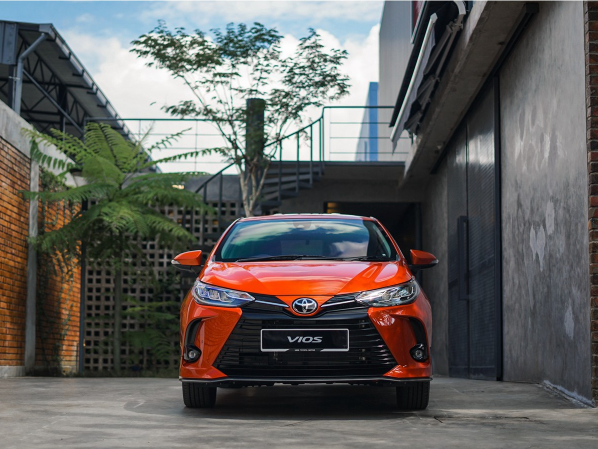
Toyota Vios Interior Design Revealed: A Balance of Functionality and Aesthetics
LienJul 18, 2025
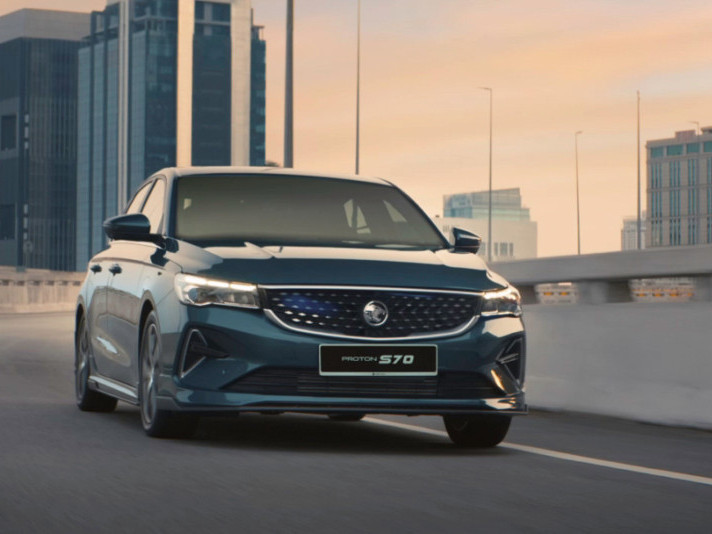
Proton S70 vs Honda City: The New Segment Leader?
LienJun 5, 2025
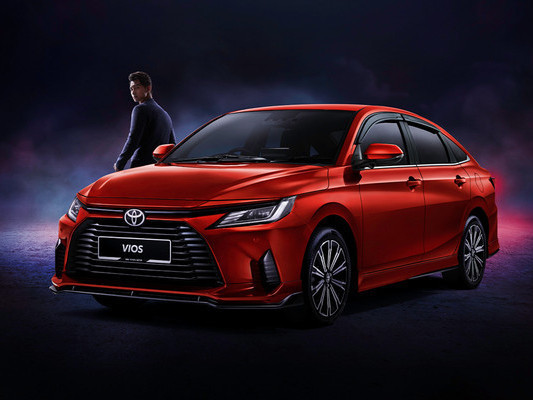
Toyota Vios : An In-Depth Buying Guide
LienMar 25, 2025
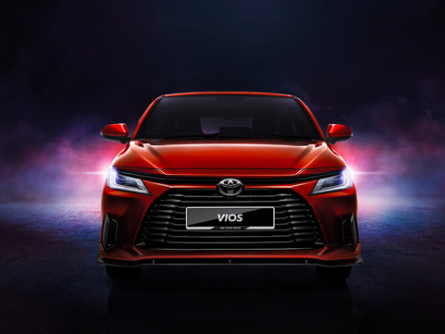
Toyota Vios: Selling price starts from RM 89,600, is it a Mini Camry?
LienMay 28, 2024

2026 Toyota Hilux Interior Unveiled, and It’s Giving Prado Vibes
JohnAug 6, 2025
View More





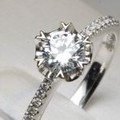






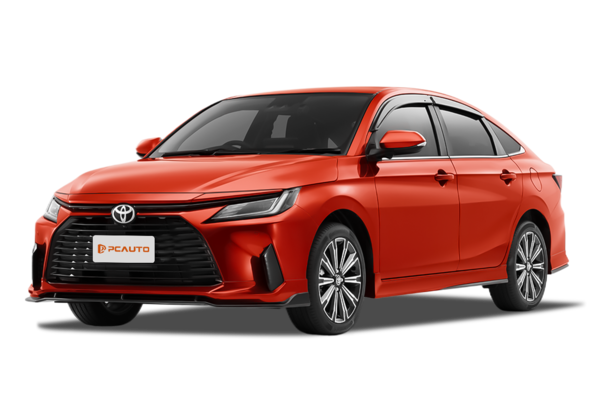





Pros
Cons